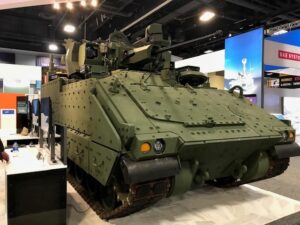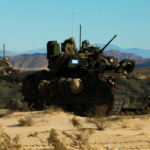
BAE Systems is offering a purpose-built design for the Army’s Optionally Manned Fighting Vehicle competition, with a lead official detailing the offering’s emphasis on modular open architecture and the use of a new “rolling lab” technology demonstrator to test new capabilities. Jim Miller, BAE Systems’ senior director of business development for combat mission systems, told reporters ahead of this week’s Association of the United States Army conference that the Army’s approach to the Bradley-replacement program focused on transformational characteristics required…

 By
By 











